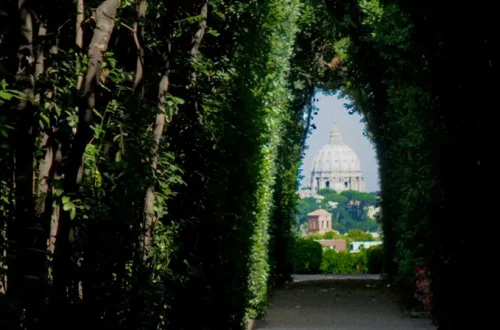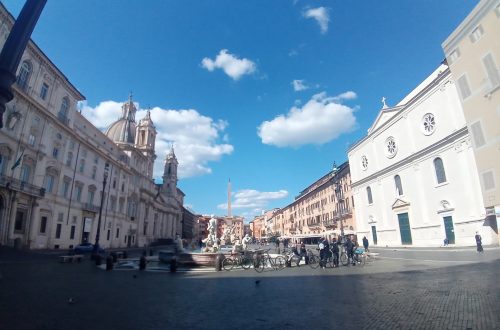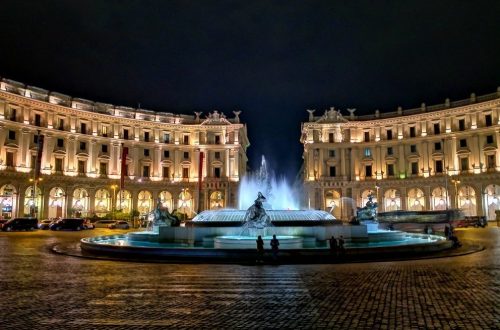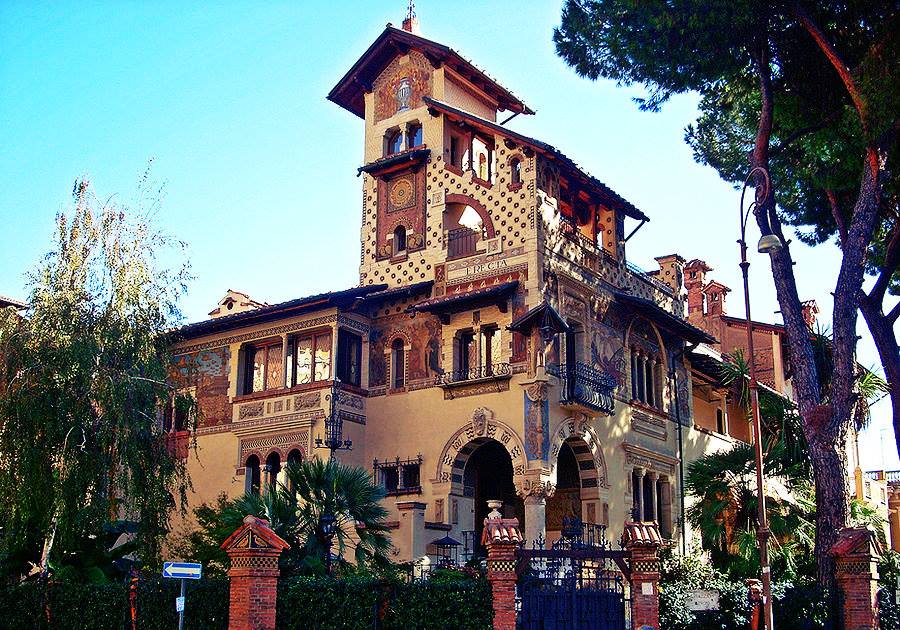
Quartiere Coppedè
In the heart of Rome, a stone’s throw from the historic center is one of the most characteristic districts of the city. In reality, not a real neighborhood, but a corner of Rome with unexpected and bizarre features, a fantastic mixture of Art Nouveau, Art Decò, with infiltrations of Greek, Gothic, Baroque and even medieval art.
Let’s talk about the Coppedè district, a complex of 26 buildings and 17 villas that rises between the Salaria and the Nomentana. A richly decorated “arch” that connects the two ambassadors’ palaces, from which a large wrought iron chandelier descends, defines the entrance to the neighborhood designed and built between 1915 and 1927 by the eclectic architect Gino Coppedè, from whom takes its name. The works were completed by his son-in-law Paolo Emilio Andrè, after the death of Coppedè himself.
The set of buildings, the incredible “pastiche” of architectural languages, which immerse the visitor in the sumptuous, and even slightly fictitious, atmosphere of the early twentieth century is articulated around Piazza Mincio, where the central space is occupied by the Fontana delle Rane , an imposing fountain populated by 12 frogs.
The square is surrounded by buildings of different shapes and sizes; the two most important buildings, decorated in an overabundant and fantastic way are: the Palazzina del Ragno of Assyro-Babylonian inspiration which is distinguished by a large spider on the facade and the Villino delle Fate characterized by a total asymmetry, with medieval arches and friezes made with the fusion of different materials, such as marble, brick, travertine, terracotta, glass.
The almost fantastic dimension of this suggestive place in Rome has inspired more than one film: the Coppedè district has definitely charmed the horror director Dario Argento who used it as a location for two of his most famous feature films: “Inferno” and “L’ bird with crystal feathers”, but also scenes from other films were shot here such as “The perfume of the lady in black” by Francesco Barilli, “Ultimo tango a Zagarolo” by Nando Cicero and “Bold blow of the usual unknowns” by Nanni Loy with Vittorio Gassman.
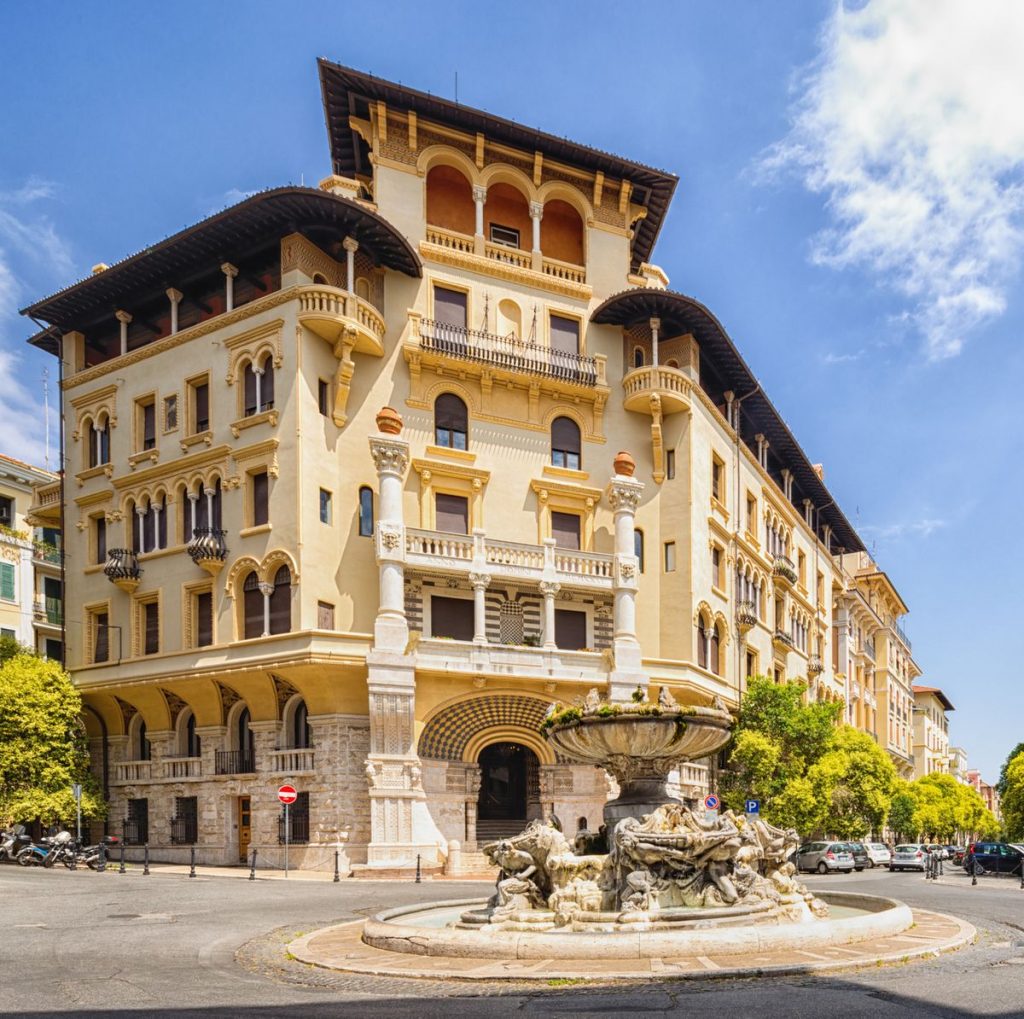
![]()


